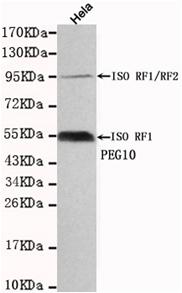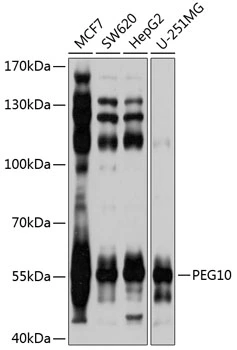
WB analysis of various sample lysates using GTX64752 PEG10 antibody. Dilution : 1:1000 Loading : 25microg per lane
PEG10 antibody
GTX64752
ApplicationsWestern Blot, ImmunoHistoChemistry, ImmunoHistoChemistry Paraffin
Product group Antibodies
TargetPEG10
Overview
- SupplierGeneTex
- Product NamePEG10 antibody
- Delivery Days Customer9
- Application Supplier NoteWB: 1:200 - 1:2000. IHC-P: 1:50 - 1:200. *Optimal dilutions/concentrations should be determined by the researcher.Not tested in other applications.
- ApplicationsWestern Blot, ImmunoHistoChemistry, ImmunoHistoChemistry Paraffin
- CertificationResearch Use Only
- ClonalityPolyclonal
- ConjugateUnconjugated
- Gene ID23089
- Target namePEG10
- Target descriptionpaternally expressed 10
- Target synonymsEDR, HB-1, MEF3L, Mar2, Mart2, RGAG3, RTL2, SIRH1, retrotransposon-derived protein PEG10, MEF3 like 1, Sushi-Ichi retrotransposon homolog 1, embryonal carcinoma differentiation regulated, mammalian retrotransposon-derived 2, mammalian retrotransposon-derived protein 2, myelin expression factor 3-like protein 1, paternally expressed gene 10 protein, retrotransposon Gag like 2, retrotransposon gag domain-containing protein 3, retrotransposon-derived gag-like polyprotein, ty3/Gypsy-like protein
- HostRabbit
- IsotypeIgG
- Protein IDQ86TG7
- Protein NameRetrotransposon-derived protein PEG10
- Scientific DescriptionThis is a paternally expressed imprinted gene that is thought to have been derived from the Ty3/Gypsy family of retrotransposons. It contains two overlapping open reading frames, RF1 and RF2, and expresses two proteins: a shorter, gag-like protein (with a CCHC-type zinc finger domain) from RF1; and a longer, gag/pol-like fusion protein (with an additional aspartic protease motif) from RF1/RF2 by -1 translational frameshifting (-1 FS). While -1 FS has been observed in RNA viruses and transposons in both prokaryotes and eukaryotes, this gene represents the first example of -1 FS in a eukaryotic cellular gene. This gene is highly conserved across mammalian species and retains the heptanucleotide (GGGAAAC) and pseudoknot elements required for -1 FS. It is expressed in adult and embryonic tissues (most notably in placenta) and reported to have a role in cell proliferation, differentiation and apoptosis. Overexpression of this gene has been associated with several malignancies, such as hepatocellular carcinoma and B-cell lymphocytic leukemia. Knockout mice lacking this gene showed early embryonic lethality with placental defects, indicating the importance of this gene in embryonic development. Additional isoforms resulting from alternatively spliced transcript variants, and use of upstream non-AUG (CUG) start codon have been reported for this gene. [provided by RefSeq, Oct 2014]
- Storage Instruction-20°C or -80°C,2°C to 8°C
- UNSPSC12352203

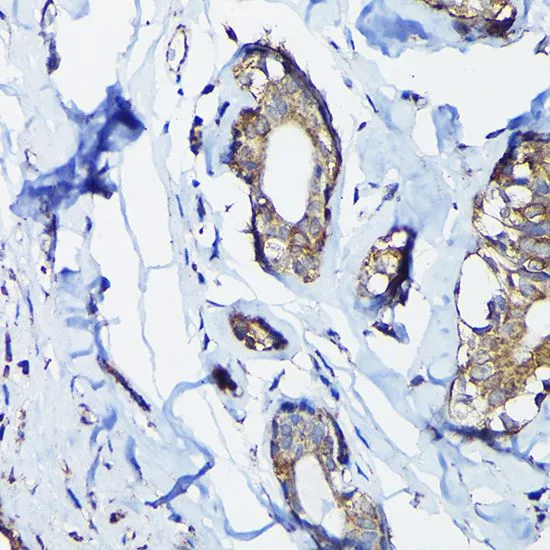
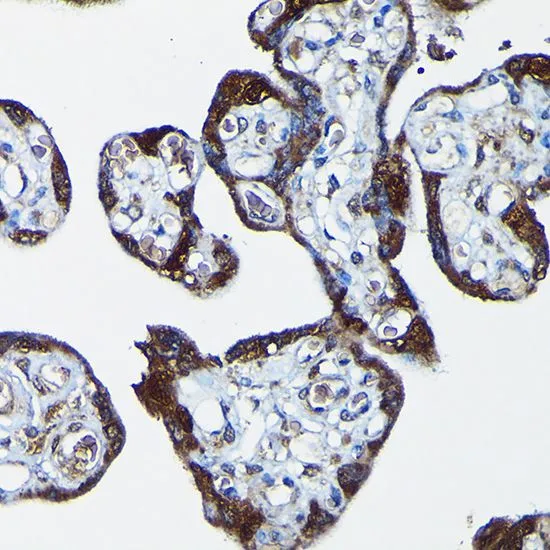
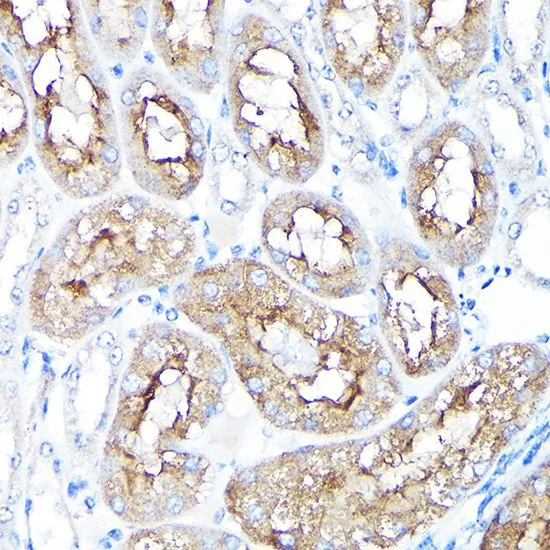
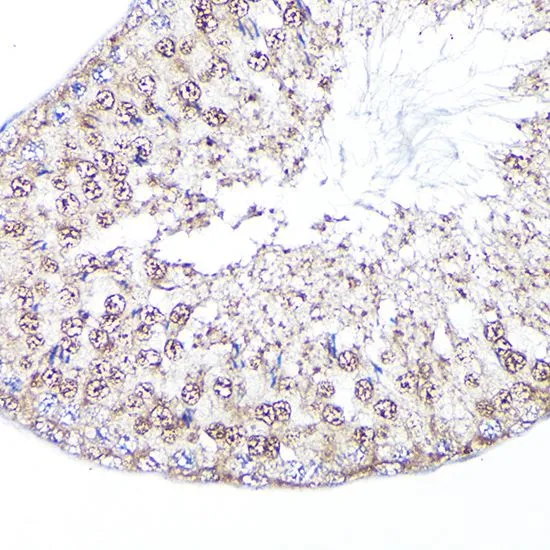

![IHC-P analysis of human Placenta tissue using GTX83100 PEG10 antibody [4C10A7].](https://www.genetex.com/upload/website/prouct_img/normal/GTX83100/GTX83100_20170912_IHC-P_1_w_23061322_895.webp)
![ICC/IF analysis of methanol-fixed HepG2 cells using GTX83101 PEG10 antibody [1B1C4]. Green : PEG10 Blue: DRAQ5 fluorescent DNA dye](https://www.genetex.com/upload/website/prouct_img/normal/GTX83101/GTX83101_20170912_ICCIF_w_23061322_922.webp)




